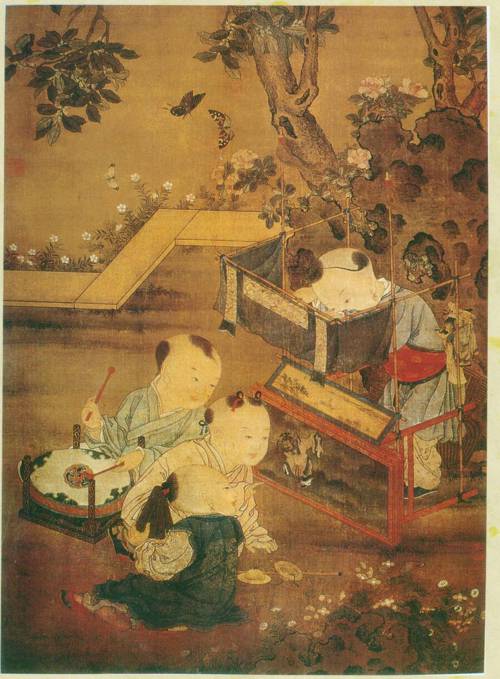
FAQ About The Cultural Impact of Puppetry in Modern Children's Media

What role has puppetry played in children's media?
Puppetry has been a significant tool in children's media by providing a unique and engaging way to tell stories and convey educational content. From puppet-led shows like "Sesame Street" and "The Muppet Show," puppets captivate young audiences with their animated expressions and voices, making learning fun and relatable.

How does puppetry influence storytelling in children's programs?
Puppetry enhances storytelling by bringing characters to life in dynamic and expressive ways. Puppets can create fantastical worlds and characters that stimulate children's imagination and provide relatable scenarios for learning and moral teaching. This method emphasizes creativity and can convey complex ideas in an accessible manner for children.

Why is puppetry considered effective for educational content?
Puppetry is effective for educational content because it captures children's attention and can simplify complicated subjects through engaging characters and narratives. The interactive nature of puppetry encourages participation, making learning more active and memorable. Puppets can also present cultural diversity and teach empathy by showcasing different perspectives.

What are some famous children's shows that use puppetry?
Some famous children's shows that employ puppetry include "Sesame Street," "The Muppet Show," "Fraggle Rock," and "Mister Rogers' Neighborhood." These programs have used puppetry to create memorable characters and deliver educational messages in an entertaining format.

How has puppetry evolved in modern children's media?
Puppetry in modern children's media has evolved with advancements in technology and storytelling techniques. While traditional hand puppets remain, many shows integrate digital puppetry and animation to create more complex movements and expressions. This evolution allows for new styles of storytelling and more interactive experiences for children.

What is digital puppetry, and how is it used in children's media?
Digital puppetry combines traditional puppet performance with computer graphics to enhance the visual and interactive elements of a puppet show. In children's media, digital puppetry allows characters to move seamlessly within animated environments and makes it possible to integrate real-time interaction with audiences, offering a richer and more immersive storytelling experience.

How do puppets help children understand emotions and relationships?
Puppets in children's media often portray emotional experiences and interpersonal relationships through relatable scenarios. By watching puppet characters express feelings and navigate social situations, children can learn about empathy, conflict resolution, and the importance of communication. Puppets provide a safe space for children to explore and understand their own emotions.

Are there cultural differences in puppetry styles used in children's media?
Yes, there are cultural differences in puppetry styles, which reflect the diverse storytelling traditions from around the world. For example, Japanese bunraku, Indonesian wayang, and European marionettes each offer unique aesthetics and methods of storytelling. These cultural variations add richness to children's media, exposing young audiences to different cultural narratives and practices.

How do puppets in children's media promote creativity?
Puppets promote creativity by encouraging children to use their imagination to interpret and engage with stories. The diverse possibilities of puppet characters and settings allow children to create their own narratives and explore various storytelling techniques. This activity fosters creative thinking and problem-solving in young viewers.

What impact did "Sesame Street" have on the utilization of puppetry in children's education?
"Sesame Street" revolutionized the use of puppetry in children's education by integrating entertaining characters with educational content. Its success showcased how puppets could effectively engage children and teach literacy, numeracy, and social skills. The show set a benchmark for future children's programming, highlighting the potential of puppets as educational tools.

Can puppetry in children's shows address social issues?
Yes, puppetry in children's shows can address social issues by presenting them in a way that is understandable and relatable for children. Shows like "Sesame Street" have addressed topics such as diversity, inclusion, and environmental awareness through puppet characters, demonstrating the capacity of puppetry to educate children about important social themes.

Why do some children's media prefer puppetry over animation?
Some children's media prefer puppetry over animation because puppets can offer a tangible, authentic experience that enhances engagement. Puppets can create a sense of interaction and realism that is sometimes less achievable with animation. Additionally, puppetry can be cost-effective and allows for on-the-fly creativity and adjustments during performances.

How has technology impacted puppetry in modern children's media?
Technology has significantly impacted puppetry by introducing new methods such as digital puppetry and motion capture. These techniques allow for more sophisticated and lifelike puppet movements, blending traditional puppetry with modern digital effects. This integration makes puppetry more adaptable and allows children's media to create more intricate and interactive stories.

What skills do puppeteers need to work in children's media?
Puppeteers in children's media need a variety of skills including creativity, voice acting, and an understanding of child development. They must be able to manipulate puppets with precision and convey character emotions convincingly. Puppeteers also need to craft engaging and educational performances that align with the show's objectives and ethos.

Are there specific educational theories that support the use of puppetry in learning?
Educational theories that support the use of puppetry in learning include constructivism and social learning theory. Constructivism advocates for learning through active engagement and hands-on experiences, which puppetry provides. Social learning theory emphasizes learning through observation, imitation, and modeling, processes facilitated by observing puppet characters in various scenarios.

What is the future of puppetry in children's media?
The future of puppetry in children's media is likely to include further integration of technology, expanding the possibilities for interactive and personalized content. As digital platforms evolve, puppetry may converge with augmented reality and virtual reality to create new, immersive experiences. The timeless appeal of puppets ensures they will continue to be a vital part of children's storytelling.

Can puppetry be effectively combined with other media formats in children's shows?
Puppetry can be effectively combined with other media formats such as live action, animation, and music to enrich storytelling. This combination allows shows to harness the strengths of each medium, using puppetry for emotional engagement and interaction, while incorporating digital effects and animation to create expansive, imaginative worlds that further captivate young audiences.

How do puppetry techniques vary between live performances and television shows?
Puppetry techniques in live performances often rely on visible puppeteers and direct audience interaction, creating an intimate experience. Television shows can use multiple camera angles and close-ups to conceal puppeteers, focusing more on the puppet's character and story. This difference tailors the puppetry technique to the medium, optimizing audience engagement.

What are the psychological benefits of puppetry for children?
Puppetry offers several psychological benefits for children, including enhanced imagination, emotional expression, and empathy building. By engaging with puppet characters, children can explore feelings and relationships in a safe environment. Puppetry can also assist in overcoming shyness and improving communication skills, as children often mimic or interact with puppet scenarios.

Why is puppetry still relevant in today's digital age of children's media?
Puppetry remains relevant in today's digital age because it provides a unique tactile and interactive experience that digital media cannot fully replicate. The ability of puppets to convey real-time emotions and responses makes them an invaluable tool for storytelling and education. Puppetry's adaptability to integrate with digital technology also ensures its continued presence in modern children's media.
